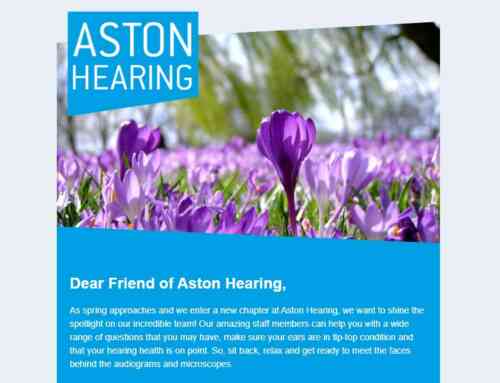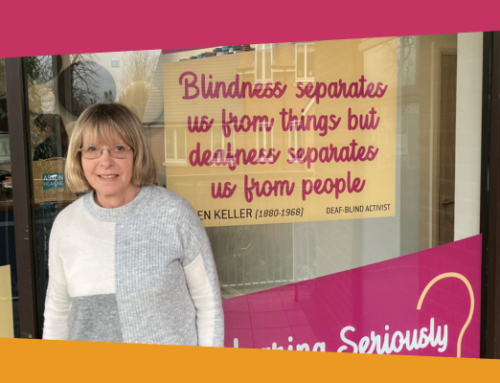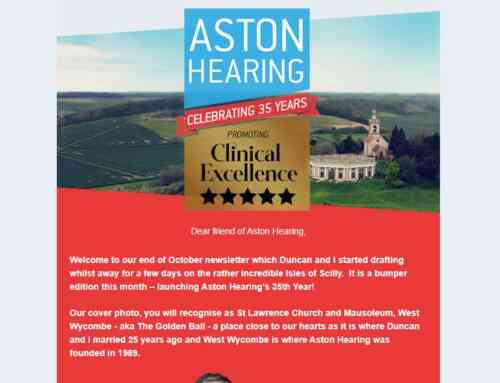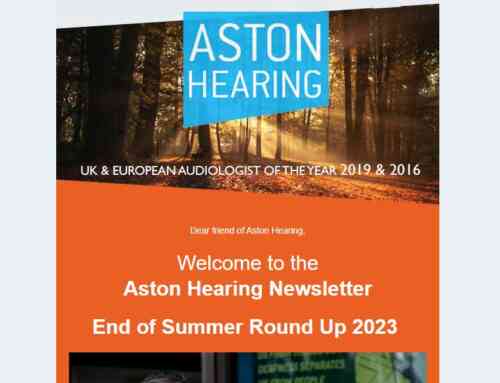HOW DO WE KNOW WHAT WE CAN’T HEAR?
Often we find it is other people’s fault that we can’t hear quite as well as we think we should
- people don’t speak clearly these days
- they mumble, the world is so noisy
- kids speak so fast these days
- I don’t have a problem hearing it is just those strong accents
WHAT IS NORMAL HEARING?
Officially normal hearing is classified as both ears being able to hear a puretone presentation of 0-20 decibels across a frequency range from 250hz through to 8000hz. Normal is the official term but it is not the best word to use as sometimes a person’s ‘normal’ hearing is the one they have grown up with and become adapted too – an example of this is Single Sided Hearing Loss.
Single Sided Hearing Loss is more common than you would imagine. Childhood illness such as measles can cause complete hearing loss, often on one side only, and when in young children, they very quickly adapt. Their ‘normal’ is hearing in one ear only and yet they don’t perceive a problem at all – it is just the way they hear.
The other way the word ‘normal’ is not very helpful is when people are told you have perfectly ‘normal’ hearing for a 78 year old! This implies that you are okay and should be able to cope and yet normal hearing for a 78 year old is not necessarily ‘good’ hearing and could be hugely improved with hearing aids but as soon as someone hears the term ‘normal’ we have a mammoth task to convince them that things could be made better!
HEARING IS COMPLEX
We hear with our ears but that is just the start of the auditory process – we require our brains to interpret the sounds into sense. What happens if the sound is being heard but the brain interprets it differently?
Hearing difficulties can stem from a problem at any point on the auditory pathway. We classify hearing loss depending upon where in the system the problem has occurred.
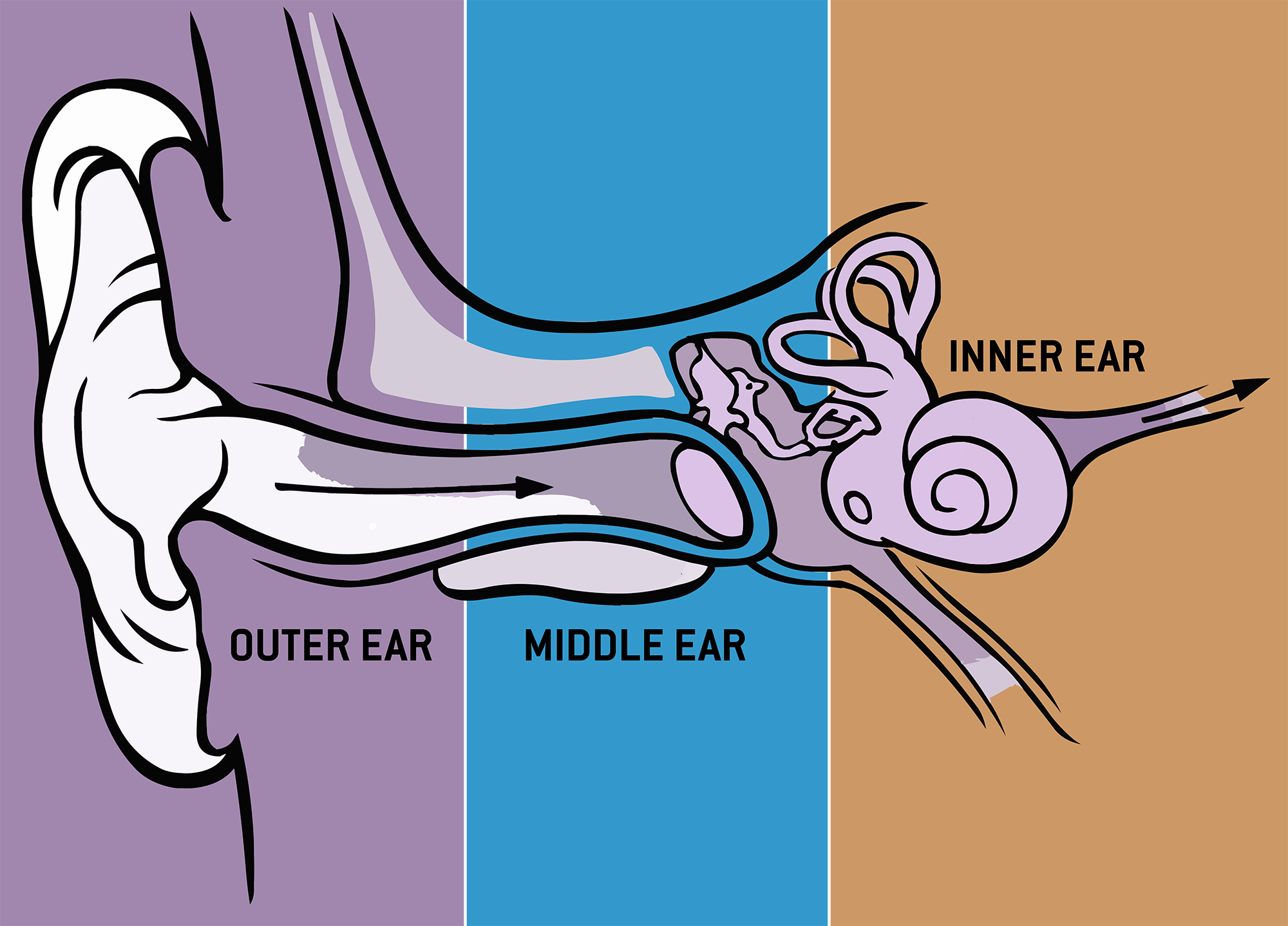
CONDUCTIVE HEARING
OUTER & MIDDLE EAR
Conductive hearing occurs in the outer and middle ear. It is literally describing the conduction of sound through the auditory system. This sort of sound conduction is known as Air Conduction. Sound is also conducted through the bone of the head and is known as Bone Conduction – in other words the sound is sent directly to the inner ear. See the diagram (overleaf) to see examples of conductive hearing losses. Conductive hearing losses are often thought of as a mechanical process and are often treatable either medically or surgically. Conductive hearing losses tend to require more volume (or sound energy) to help conduct the sound through the system. The sound quality is generally preserved.
TYPES OF CONDUCTIVE HEARING LOSS:
- Perforated Ear Drum
- Wax build up
- Glue Ear
- Dislocation of the bones
- Otosclerosis – calcification of the bones in the middle ear
- Cholesteatoma
- Anatomical features – such as collapsing ear canal
- Hematoma of the outer ear (Cauliflower Ear)
SENSORINEURAL HEARING
MIDDLE EAR
Sensorineural hearing occurs in the inner ear. It is sometimes known as Nerve Hearing. It occurs in the cochlear. See the diagram to see examples of sensorineural hearing losses. Sensorineural hearing losses tend to be difficult if not impossible to treat medically. Sensorineural hearing losses are more complicated to help and require more sophisticated hearing aid technology to cope. This is because sound clarity and speech discrimination is affected and increased volume is necessary but requires a non-linear response.
TYPES OF SENSORI-NEURAL HEARING LOSS:
- Noise damage
- Virus
- Old age
- Balance issues
- Menieres
- Labyrithitus
- Vascular issues – blood flow
RETRO-COCHLEA HEARING
INNER EAR
This is the classification from the auditory nerve onward to the brain. See the diagram overleaf to see examples of retro-cochlea hearing losses. We are focusing much more attention on brain hearing. Sometimes we find the standard hearing tests show perfect hearing but when you test specifically speech hearing, especially in noise the results show a different story. This is an area we are particularly interested in related to young people’s hearing and prolonged use of ear-phones
TYPES OF RETRO-COCHLEA HEARING LOSS:
- Old age
- Brain or nerve lesion
- Brain development
- Cognitive issue
- Auditory Processing Disorder
- Tinnitus
MIXED HEARING LOSS
Of course as with all complicated health systems – it is possible – especially over time – that the hearing loss we are dealing with is a mixture of Conductive, Sensorineural and Retro-Cochlea. This can mean that the solutions need to be tailored and individualised. Unfortunately with hearing solutions – one size rarely fits all!

Sound frequencies stimulate the inner hair cells within the cochlea. Different frequencies (high, mid, low) are picked up by different areas of the cochlear.
Examples of conditions that can sometimes be recognised by where the inner hair cell damage occurs within the cochlear.
Noise-induced hearing loss – damage
4000hz – 6000hz
(notch – high frequency)
Old age – gradual onset
1000-8000hz
(starts with higher frequencies – flattens out over time)
Ototoxicity
750-2000hz
(can be described as cookie bite loss)
Menieres – fluctuates
250-500hz
(can be referred to as reverse slope loss)


